Wisconsin Fruit Crop Scouting Report: May 7, 2025
Hello fruit growers, we are excited to share apple and grape scouting updates with you this year through the Wisconsin Fruit Newsletter. Weather is warming up, with expected highs of 80+°F through the next week in southern Wisconsin that will push phenology and pest development along. As a reminder, this newsletter will cover apple and grape phenology, general scouting observations, and includes an overview of degree day accumulation. Growers can reference the Midwest Fruit Pest Management guide for further information on pest management best practices.
Grapes
Phenology
At the West Madison Agricultural Research Station (WMARS) in Madison, WI, buds average around E-L* stage 3 (Wooly Bud +/- green showing) on Petite Pearl to stage 7 (First leaves separated from shoot tip) in Frontenac and LaCrescent. At the Peninsular Agricultural Research Station (PARS) all cultivars are at bud swell stage. Bud burst to first leaf separation is expected for all varieties this week with the forecasted warm temperatures.
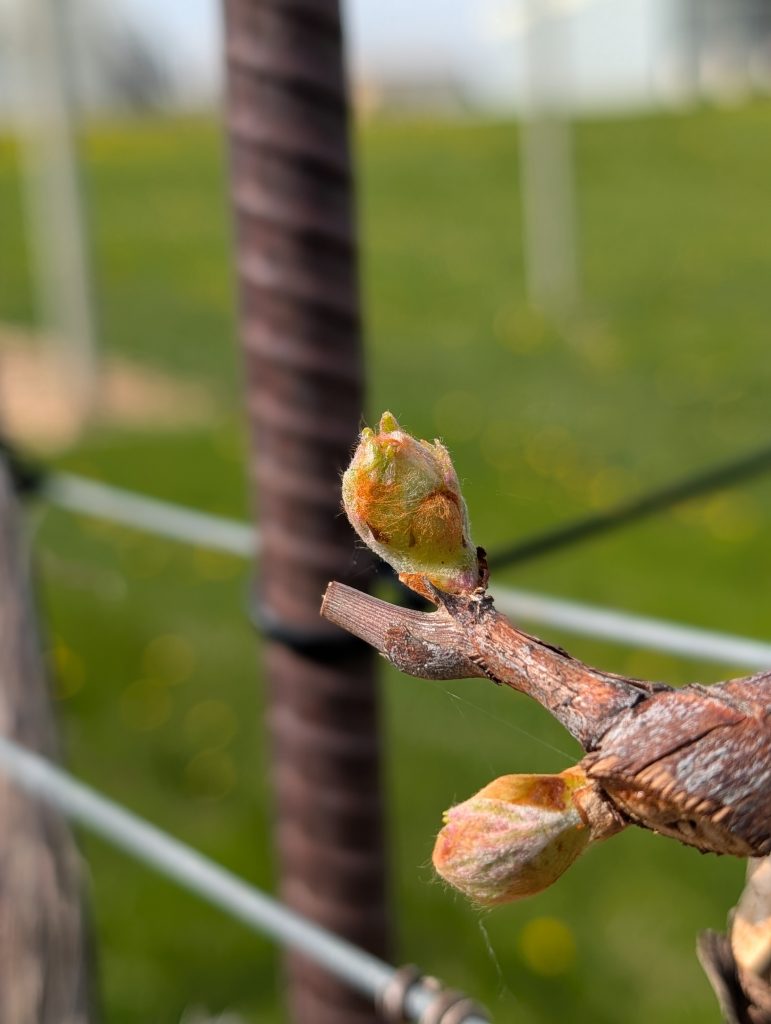
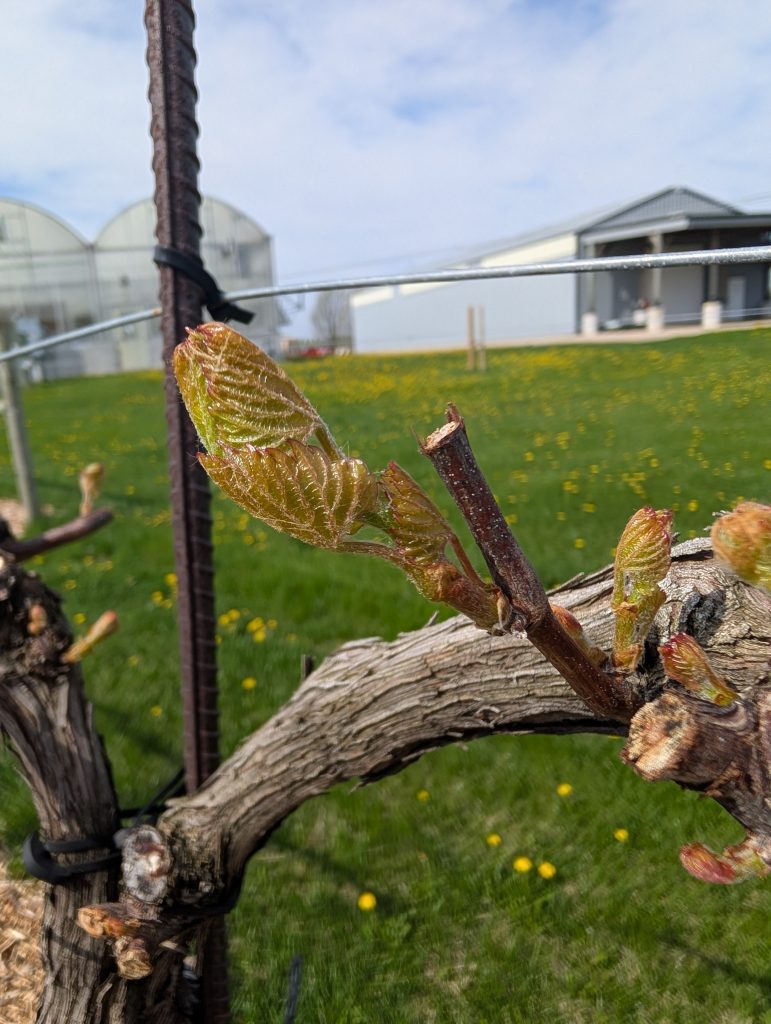
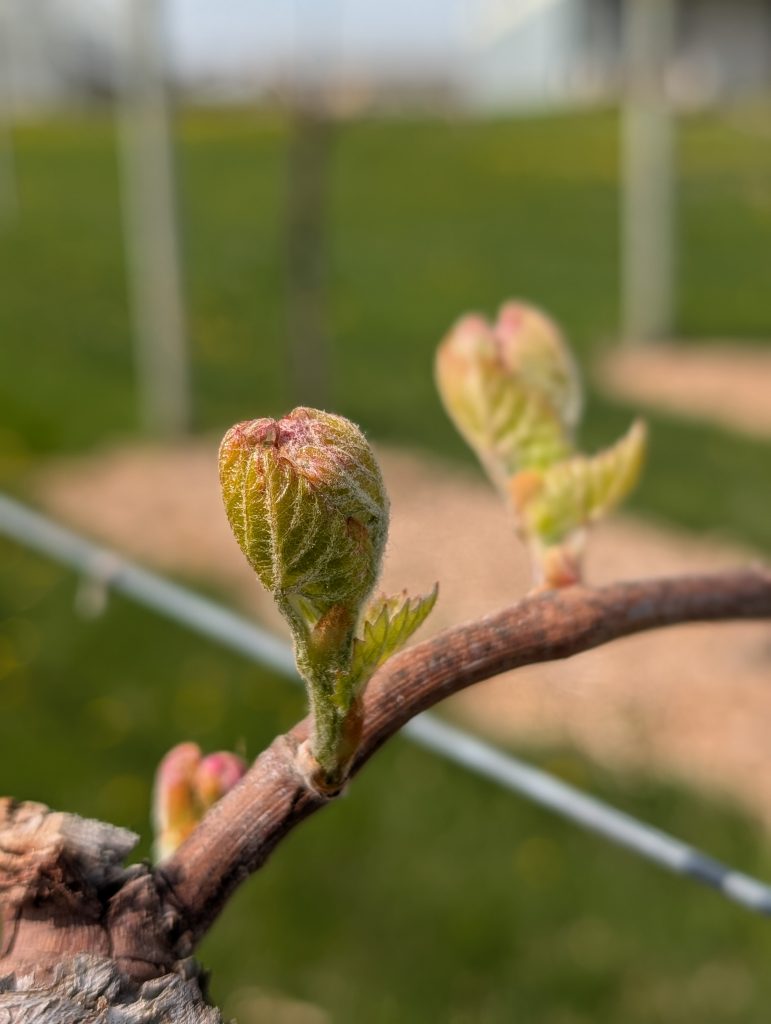
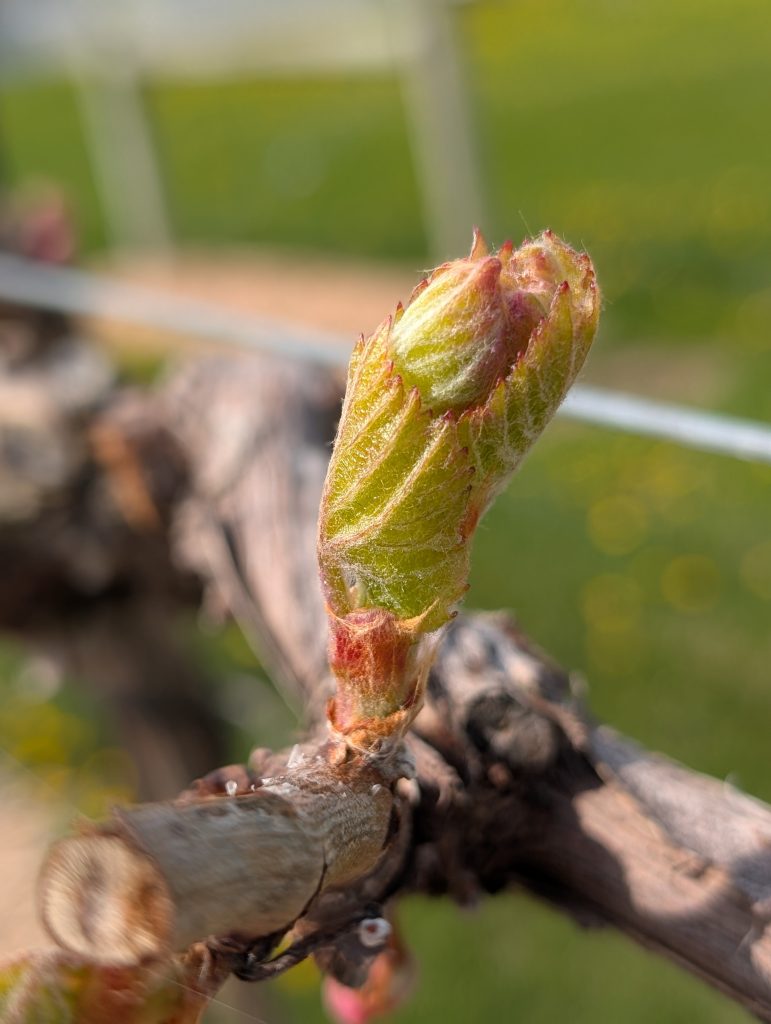
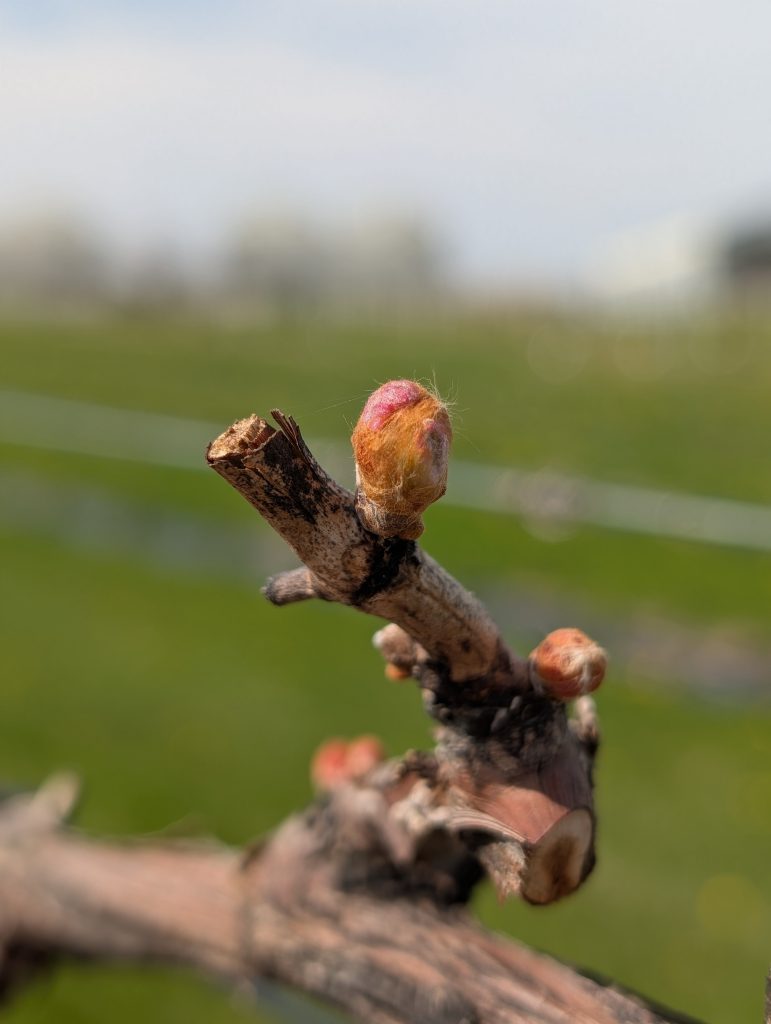
*E-L stands for Eichhorn-Lorenz growth stages scale to describe grapevine development.
Growing Degree Day (GDD) Accumulations
Below displays the GDD accumulations from April 1 through May 8 for the current and last two seasons. Our current season appears to be slightly behind compared to 2024, though may make significant strides in the next week or two. This data is collected using the NEWA website. You can visit their “About degree days” page to learn more about the concept of degree days as well as the formulas utilized for calculations.
Growing degree day (GDD) accumulation as of May 8, 2025 (April 1 start date; base 50°F BE*) at the WMARS and PARS.
| Location | 2025 | 2024 | 2023 |
| Verona WMARS | 140 | 201 | 187 |
| Sturgeon Bay PARS | 42 | 99 | 103 |
*BE = Baskerville-Emin calculation method
Pests and other considerations
There were no signs of diseases or insect pests at WMARS. The first fungicide application will go out next week ahead of the rain in the forecast. Special attention should be paid to flea beetle and cutworms that may be feeding on developing buds, you can refer back to this article for scouting and management recommendations. Once buds burst open, there is no need to treat for flea beetle and cutworms. Review petiole analysis form last year to make adjustments to nutrient application. Now is the time to start fertilizing if needed.
Apples
Phenology
Early apple cultivars have reached full bloom (Gala, McIntosh) to early petal fall (Ida Red, Zestar) in southern Wisconsin, while later cultivars have reached popcorn (Fuji) to king bloom (Honeycrisp) in southern Wisconsin. Remember to record 50% green tip dates at several blocks/cultivars in your orchard, to use in the NEWA models this summer. In terms of degree day accumulation, we are tracking growing degree days (DD 43 °F BE) from January 1 to monitor bud development in apples. For early cultivars in Southern Wisconsin we expect to be at petal fall by the mid/end of next week.
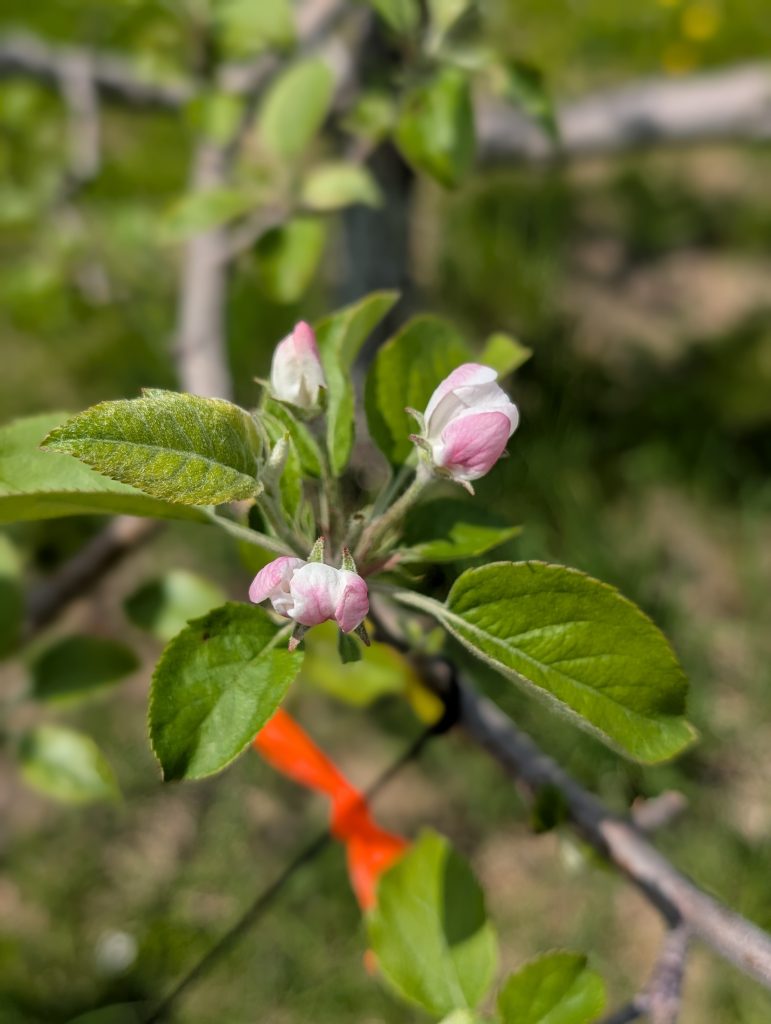
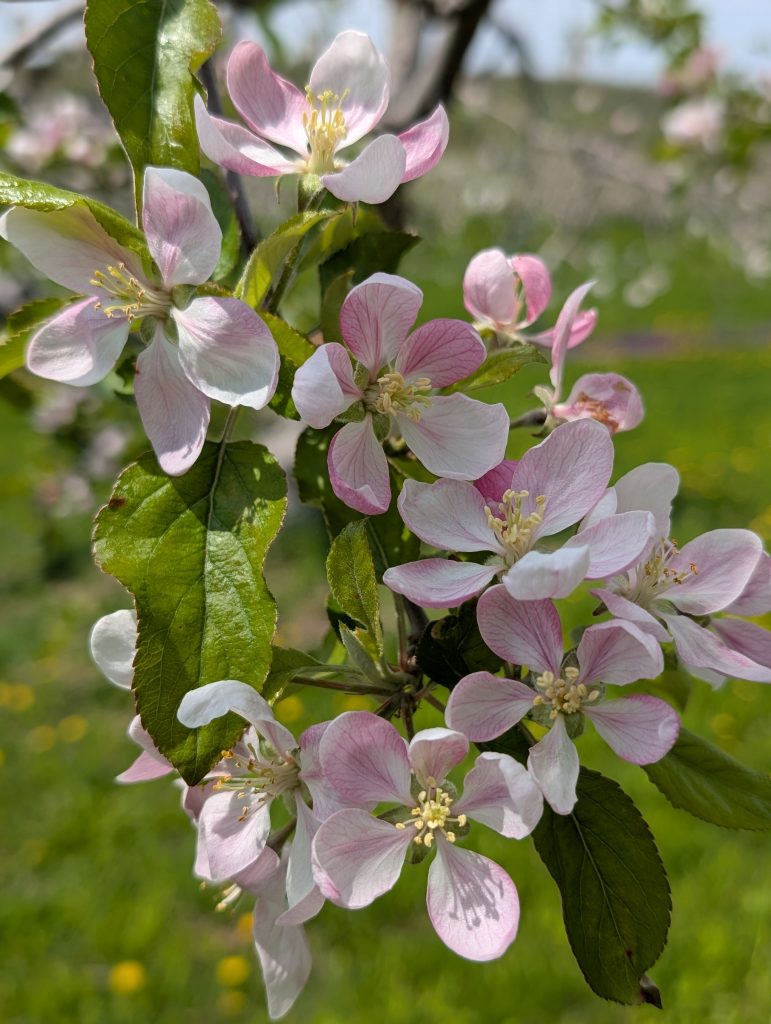
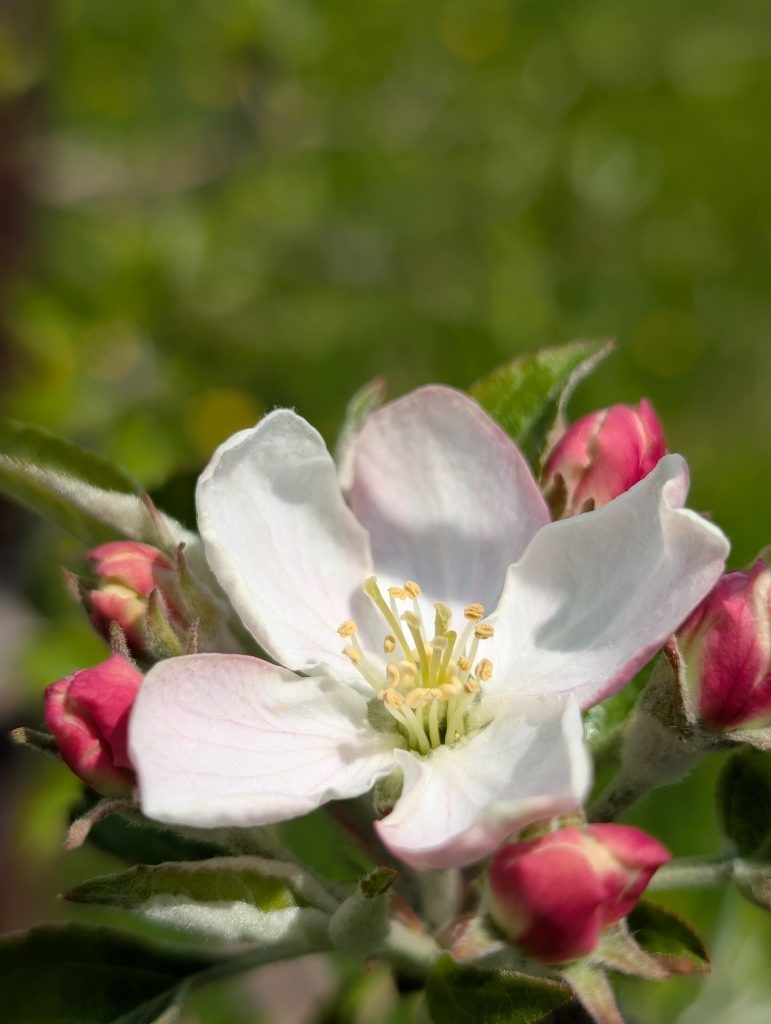
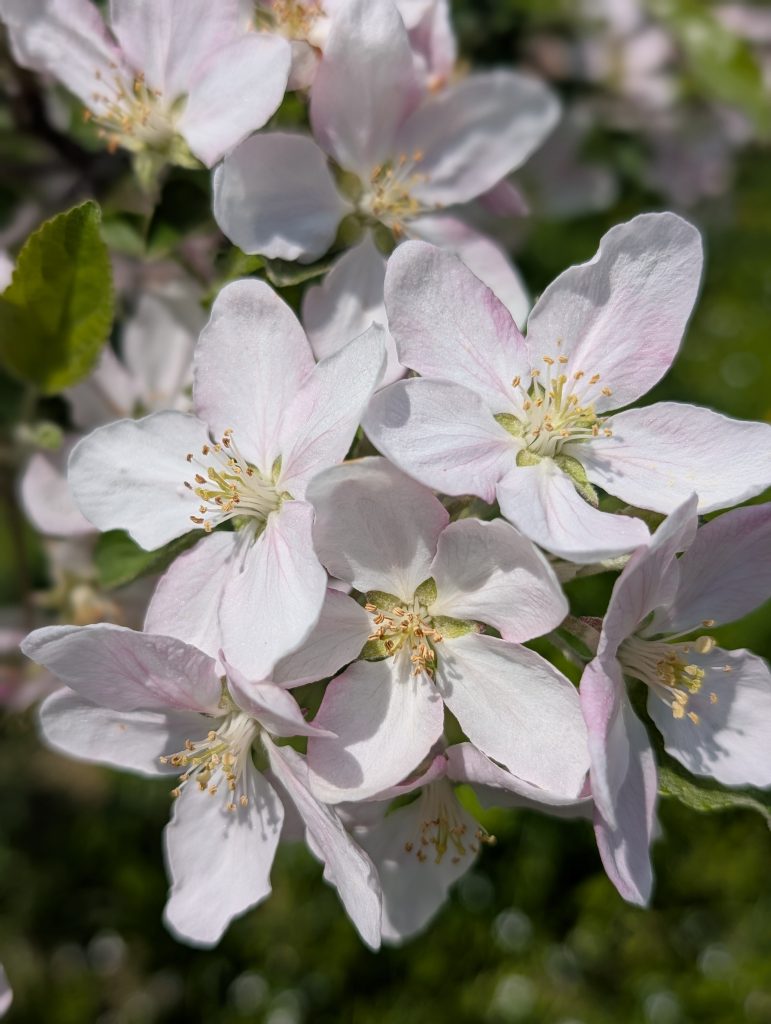
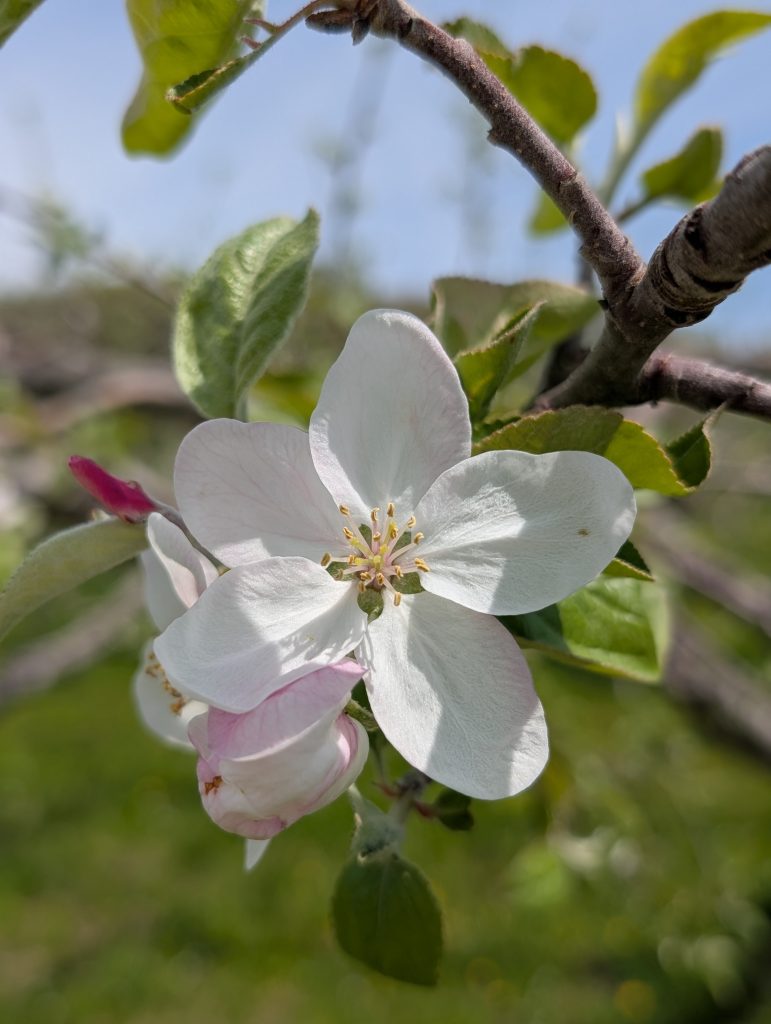
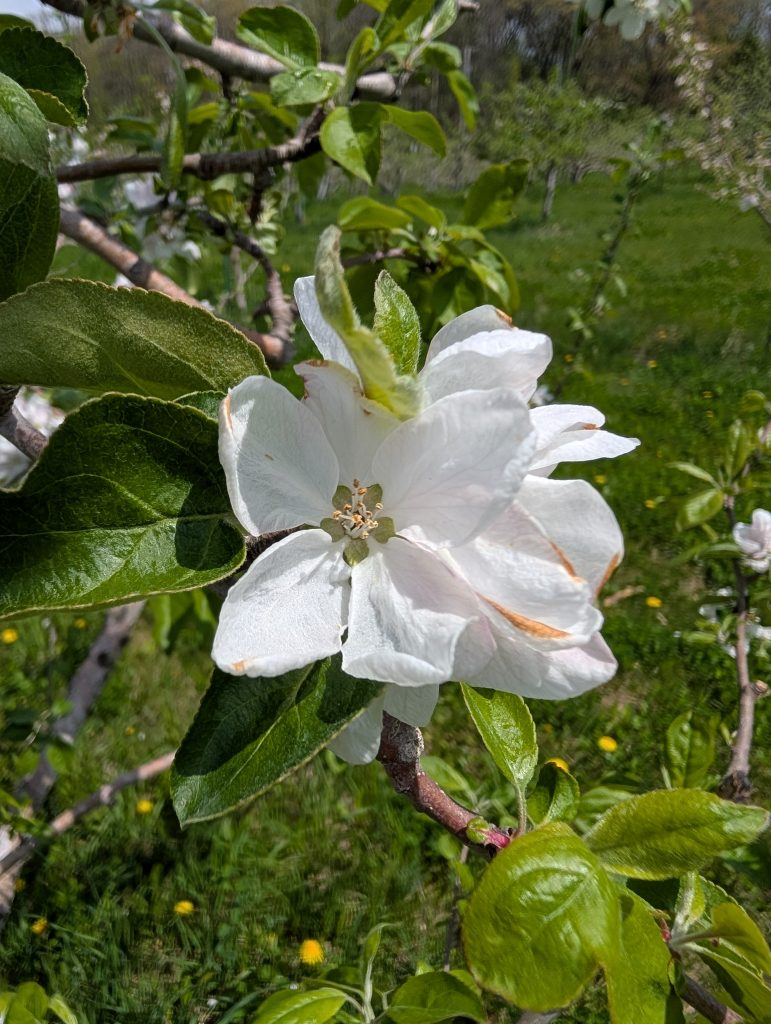
Growing Degree Day (GDD) Accumulations
Similar to grapes, degree day accumulation (Base 43°F BE*) from January 1 is slightly behind compared to last year in central and Southern Wisconsin. While degree day accumulation in Northern Wisconsin and near the Great Lakes are even further behind compared to last year. This may translate to a wider variance in phenology and pest development across the state. This data is collected using the NEWA website. You can visit their “About degree days” page to learn more about the concept of degree days as well as the formulas utilized for calculations.
Growing degree day (GDD) accumulation in 2023, 2024 and 2025 as of May 8 (January 1 start date; base 43°F BE*).
| Location | 2025 | 2024 | 2023 |
| Verona WMARS | 404 | 499 | 342 |
| Gays Mills | 434 | 499 | 346 |
| Eau Claire | 355 | 384 | 295 |
| Door County PARS | 170 | 288 | 206 |
| Fond Du Lac | 312 | 503 | 333 |
| Racine | 315 | 508 | 338 |
*BE = Baskerville-Emin calculation method
Pests and other considerations:
- If you have a history of bitter pit in your Honeycrisp orchard, consider applying Apogee at pink to reduce bitter pit incidence.
- Review bloom thinning recommendations.
- Many apple varieties are progressing through bloom. Now is the time to plan your streptomycin and/or kasugamycin and Apogee applications (or OMRI materials for organic orchards) to protect against fire blight, and to monitor disease forecasting models like NEWA for potential infection events. Check out the article on fire blight management in this week’s newsletter.
- During bloom, delay insecticide applications until petal fall to protect pollinators.
- Growers should consider hanging codling moth pheromone traps to establish a clear biofix date.
- Plum curculio and spring leafroller larvae have been observed in southern Wisconsin (see photos below). Growers with a history of either pest may consider monitoring orchard perimeters.
- Check out the WI DATCP Orchard Insect Pest Bulletin for more information on current insect trap captures across the state.
- Need insect scouting supplies, lures or traps? Place your order here: Great Lakes IPM
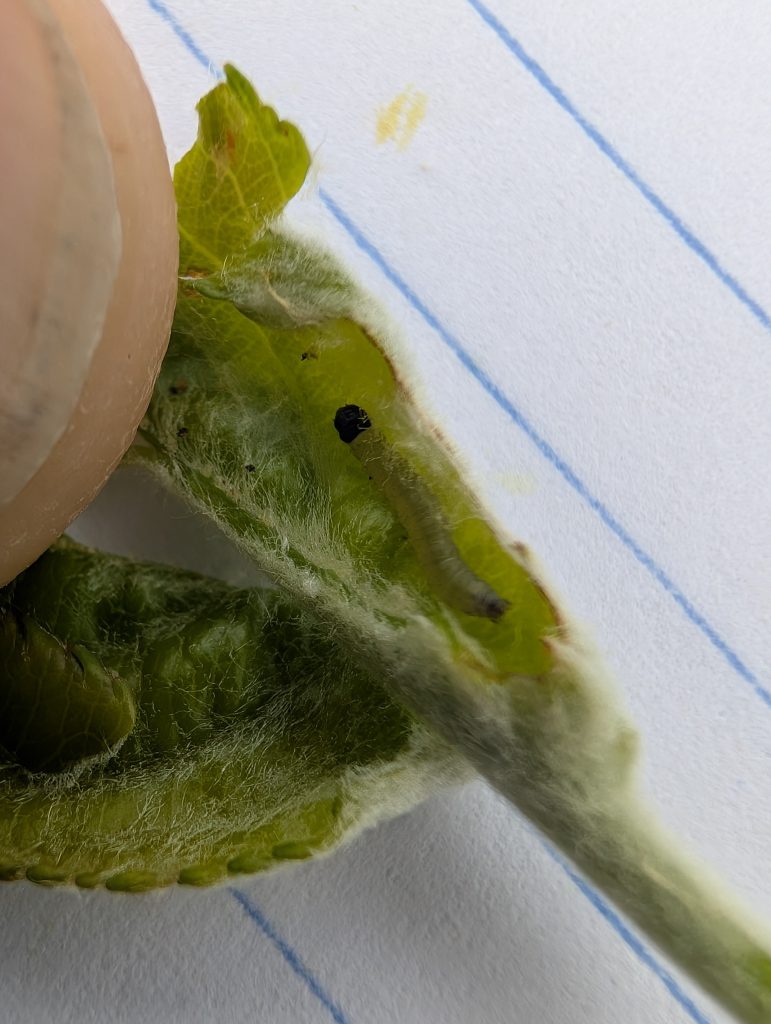
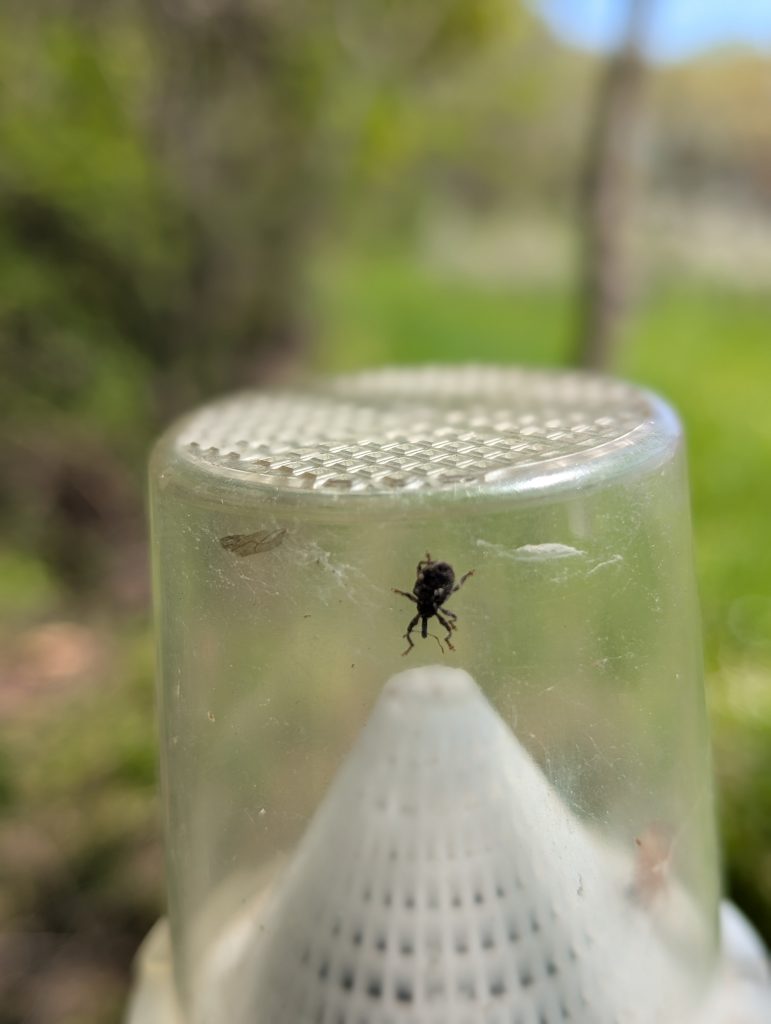
That’s all for this week – good luck to all WI Fruit Growers as we move through bloom!
This article was posted in Apples, Disease, Grapes, Insects and tagged Amaya Atucha, Apples, Courtney Meeks, disease, gdd, Grapes, growing degree day accumulations, Growing Degree Days, Josie Dillon, Leslie Holland, pests, phenology, Wisconsin Fruit Crop Scouting Report..
